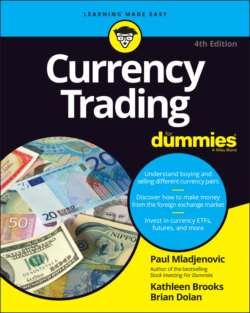Читать книгу Currency Trading For Dummies - Kathleen Brooks - Страница 44
Stocks
ОглавлениеStocks are microeconomic securities, rising and falling in response to individual corporate results and prospects, while currencies are essentially macroeconomic securities, fluctuating in response to wider-ranging economic and political developments. As such, there is little intuitive reason that stock markets should be related to currencies. Long-term correlation studies bear this out, with correlation coefficients of essentially zero between the major USD pairs and U.S. equity markets over the last five years.
The two markets occasionally intersect, though this is usually only at the extremes and for very short periods. For example, when equity market volatility reaches extraordinary levels (say, the Standard & Poor’s [S&P] loses 2+ percent in a day), the USD may experience more pressure than it otherwise would — but there’s no guarantee of that. The U.S. stock market may have dropped on an unexpected hike in U.S. interest rates, while the USD may rally on the surprise move.
In another example, the Japanese stock market is more likely to be influenced by the value of the JPY, due to the importance of the export sector in the Japanese economy. A rapid rise in the value of the JPY, which would make Japanese exports more expensive and lower the value of foreign sales, may translate to a negative stock-market reaction on the expectation of lower corporate sales and profitability.
In the world of currencies, the investing and speculative choices for participating have expanded greatly since the last edition of this book. I (coauthor Paul) think that currency exchange-traded funds (ETFs) are a fantastic way to speculate in the currency markets without all the head-scratching complexity of forex and currency futures (check out ETFs in Chapter 13). Another currency-related vehicle that has grown tremendously in terms of popularity and acceptance in recent years has been cryptocurrencies. Find out more in Chapter 16.
